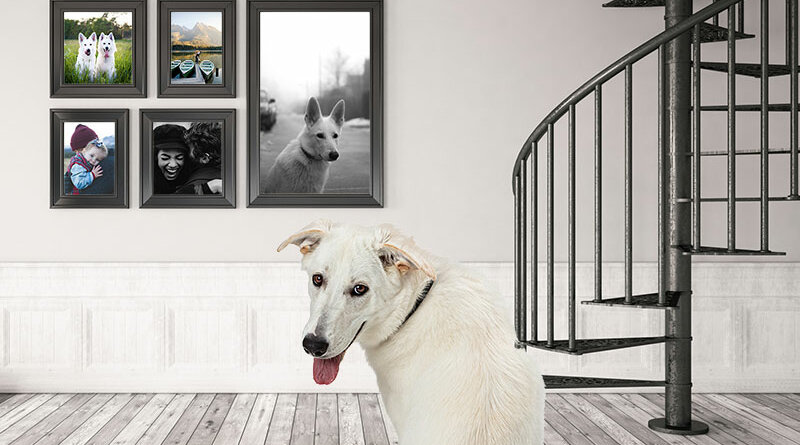When Your Dog Won’t Use Stairs
Dear Bark: We have a seven-year-old, 45-pound Lab/Husky mix and live in a condo with a spiral staircase. Our dog does not like the spiral staircase, and will not use it. We tried training her ourselves and we even hired a trainer, but no dice. Because she likes being close to us, we eventually started carrying her up and down the stairs every day, but recently, she’s become increasingly unhappy about being physically transported. Since moving isn’t an option, we’re faced with leaving her alone downstairs when we go to bed or continuing to carry her despite her objections. Is there another way to approach this?
Like fireworks and Halloween, spiral staircases are disliked by most dogs; if it were up to dogs, this architectural feature would probably be banned entirely. But, like many people, you’re stuck with them, so I want you and your dog to be able to be together without her becoming upset about the stairs. Here are ways to work toward that goal.
Make the stairs less frightening. The openness of a spiral staircase frightens many dogs (and people, too). This terrifying view can be improved by covering the gaps between the railings and the risers with poster board or cardboard. When dogs can’t see the open space or the floor below, it’s easier for them to be more confident and to overcome their fear. Non-slip treads are also helpful; spiral-staircase steps vary in width, and treads make slipping less likely—and also, the stairs less scary.
Teach your dog to associate being picked up with feeling happy. Begin by taking a step toward her and tossing her treats. When she seems happy about your one-step approach, take two steps and toss treats. Treating all the while, progress gradually until you’re able to walk right up to her, touch her and then pick her up. Don’t bring her upstairs during this training interval, as a negative experience will undo all your hard work. Some dogs respond well to having a cue that alerts them to being lifted up, making it less of a surprise. A phrase such as “Up we go!” or “Time for bed!” lets her know what’s happening.
GET THE BARK IN YOUR INBOX!
Sign up for our newsletter and stay in the know.
Be sure you’re lifting her safely. There are several ways to safely lift a 45-pound dog, and it’s worth figuring out which way your dog is most comfortable with. Never lift by a dog by her legs, collar or tail, or by reaching under her armpit area (like you’d pick up a child). Support her entire body, with one arm under her chest and the other under her back end. Some dogs feel more secure being carried while wrapped in a towel or blanket, but others squirm and are hard to hold onto when wrapped. If you don’t already know, see how your dog reacts to that approach.
Investigate the possibility of pain. It’s possible that your dog’s recent objections to being carried relate to pain or discomfort. At seven, she’s no longer young, which makes this more likely. Check with your veterinarian to see if pain may be making her object to being carried.
Give training another try. Even though your earlier training attempts were unsuccessful, I still recommend that you revisit training. Set her up for little successes as you work toward the goal of a dog who confidently navigates stairs. If your dog is not already good at going up and down regular (non-spiral) stairs, start by helping her become comfortable with them. (I discuss and demonstrate how to do this in Learning to Handle Stairs.) Only then should you work on training her to deal with spiral stairs.
Once your dog is comfortable with regular stairs and with being picked up, carry her up the spiral stairs but set her down with just one more step to climb. (Keep her on the outside of the step, which gives her more paw room.) Lure her up the last step so that she succeeds in getting herself to the top, albeit from the second-to-last step. When she can do this confidently, set her down two steps short of the top. Keep working on adding steps as she becomes adept at the previous level of difficulty. Once she can go up the stairs, repeat the process going down, starting by setting her down with only one step to negotiate. You can also begin this part of the process while you are downstairs by lifting her and putting her on the bottom step so she’s heading down toward you.
There are multiple ways to help your dog so she can happily enjoy being with you in the evenings and at night—making the spiral staircase less scary, associating pick-ups with treats, and training her to go up and down the stairs herself. As is so often the case, the key concept is patience!




